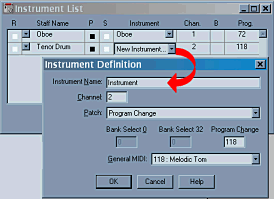Tea Coffee Milk Sugar
In the composing
activities you have just followed, you used the one beat note (crotchet).
If you were to clap the rhythm of your melodies, it would probably sound quite
boring. To add rhythmic interest to the melodies, we could split some of the
one beat notes into two half-beat notes; these half beat notes are called quavers
and look like this: ![]() .
When two quavers are written together, they become joined together with a beam:
.
When two quavers are written together, they become joined together with a beam:
![]() . It is
useful to clap these rhythms, using common words to help keep in time. One beat
notes can use one syllable words such as Tea or Milk, whilst two
quaver rhythms can use words with two syllables such as Coffee or Sugar.
Rhythmic phrases such as Tea-Coffee-Milk-Sugar would look like this when
written on a stave:
. It is
useful to clap these rhythms, using common words to help keep in time. One beat
notes can use one syllable words such as Tea or Milk, whilst two
quaver rhythms can use words with two syllables such as Coffee or Sugar.
Rhythmic phrases such as Tea-Coffee-Milk-Sugar would look like this when
written on a stave:
![]() Practice
clapping this rhythm whilst saying the words. Divide pupils into two groups;
one group claps the rhythm Tea-Milk-Tea-Milk and the other claps the
rhythm Tea-Coffee-Milk-Sugar. Make up other word rhythms for the pupils
to clap.
Practice
clapping this rhythm whilst saying the words. Divide pupils into two groups;
one group claps the rhythm Tea-Milk-Tea-Milk and the other claps the
rhythm Tea-Coffee-Milk-Sugar. Make up other word rhythms for the pupils
to clap.
Try making up longer
rhythms and clapping them. What do you think these rhythms sound like?
Coffee Sugar Tea Milk | Sugar Tea Coffee Milk
Milk Sugar Coffee Tea | Coffee Sugar Coffee Milk
Make up your own rhythm words using one and two syllable words. Try and choose words which go together, such as Hot-Water-Cold-Water or Apple-Lemon-Peach-Plum. Don't forget to practise clapping your rhythms so that you can perform them accurately.
Adding a rhythm stave
![]() To
add a rhythm stave (or any other instrument stave) to PrintMusic requires a
few steps. Make sure that the Staff Tool is Selected then Select New
Staves... from the Staff menu (note that different menu items appear
here depending upon the tool selected). The dialogue box which appears is the
same one that appears when you create instrument staves for the first time in
a new piece of music. From the Percussion section, choose a suitable
rhythm instrument (e.g. Tenor Drum) and Add it to the music. Before entering
any notes, choose Instrument List from the Window menu. The Tenor
Drum stave should appear in the list, but it follows the attributes of the other
stave.
To
add a rhythm stave (or any other instrument stave) to PrintMusic requires a
few steps. Make sure that the Staff Tool is Selected then Select New
Staves... from the Staff menu (note that different menu items appear
here depending upon the tool selected). The dialogue box which appears is the
same one that appears when you create instrument staves for the first time in
a new piece of music. From the Percussion section, choose a suitable
rhythm instrument (e.g. Tenor Drum) and Add it to the music. Before entering
any notes, choose Instrument List from the Window menu. The Tenor
Drum stave should appear in the list, but it follows the attributes of the other
stave.
 To
set the sound for the percussion instrument, Select the pull-down menu in the
Instrument column and Select New Instrument... from the list.
Enter a name and make sure that the Channel Number is different from
the other stave (range is 1 to 16), then choose a sound from the General
MIDI pull-down list (118 Melodic Tom is good). Be careful not to
set these parameters from the B column as you did earlier, or you will find
both instruments using the same sound on the same MIDI channel. Now enter your
rhythmic accompaniment for the new stave using the patterns you created earlier.
As a rule, each stave should be set to a different MIDI channel, even if two
or more staves are set to use the same instrument sound.
To
set the sound for the percussion instrument, Select the pull-down menu in the
Instrument column and Select New Instrument... from the list.
Enter a name and make sure that the Channel Number is different from
the other stave (range is 1 to 16), then choose a sound from the General
MIDI pull-down list (118 Melodic Tom is good). Be careful not to
set these parameters from the B column as you did earlier, or you will find
both instruments using the same sound on the same MIDI channel. Now enter your
rhythmic accompaniment for the new stave using the patterns you created earlier.
As a rule, each stave should be set to a different MIDI channel, even if two
or more staves are set to use the same instrument sound.
Add suitable expression elements of volume for the percussion stave so that there is a good balance between the melody and the rhythmic percussion. You may want to add another percussion stave which uses a different percussion sound (e.g. bell or tambourine) and plays a contrasting rhythm. Don't forget to balance the music. Which stave is the most important? Save your music when you have finished editing.
| Back>Tempo, Volume and Timbre... |